I am an unabashed lover of nature and forty-two years of being a professional gardener have given me more than my fair share of wildlife encounters. So, I thought that I would tell you about a few of these and couple them with some advice on how to minimize animal impacts on your garden, with an emphasis on prevention.
Blue Heron
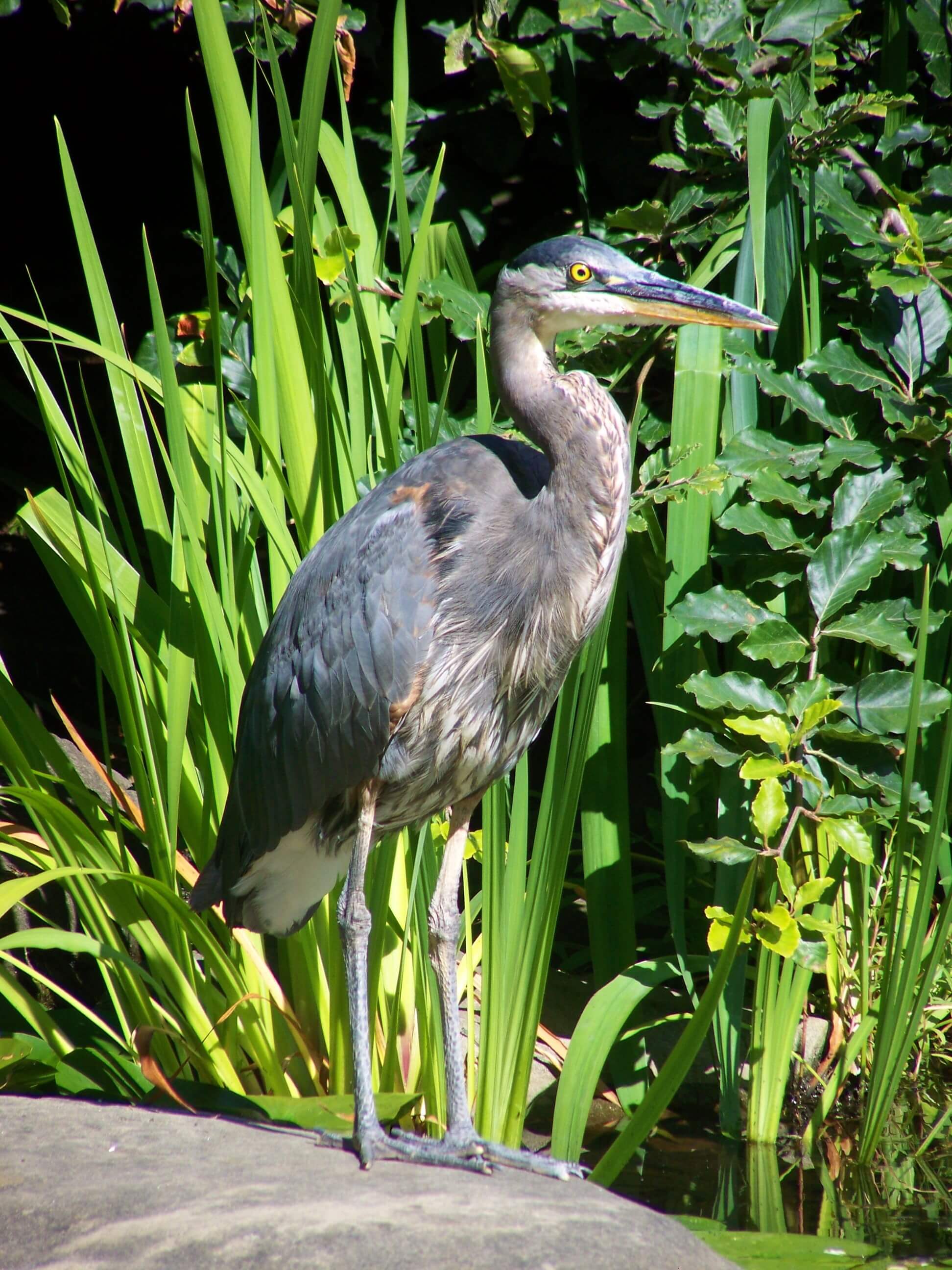
While these are beautifully majestic birds, they are also prolific eaters of fish, including Koi and goldfish. So, if you are considering installing a pond, then forget the marginal shelf (a shallow ledge for placing plants) as this is nothing more than a "wet bar" for Blue Herons, where they stand perfectly still until your unsuspecting fish swim by and become an instant sushi snack. Having a pond with steeply sloping sides and an adequate depth (4’) in the center will discourage wading. Blue Heron decoys do work at certain times of the year, provided they are moved occasionally, but during the mating season, I have literally seen a Blue Heron doing a dance with his plastic imposter. Erecting netting or a series of fish line string barriers will provide a deterrent, but these also ruin the aesthetics of the pond. A "Scarecrow" motion detector sprinkler can also discourage them temporarily, at least until they become accustomed to it.
Cats
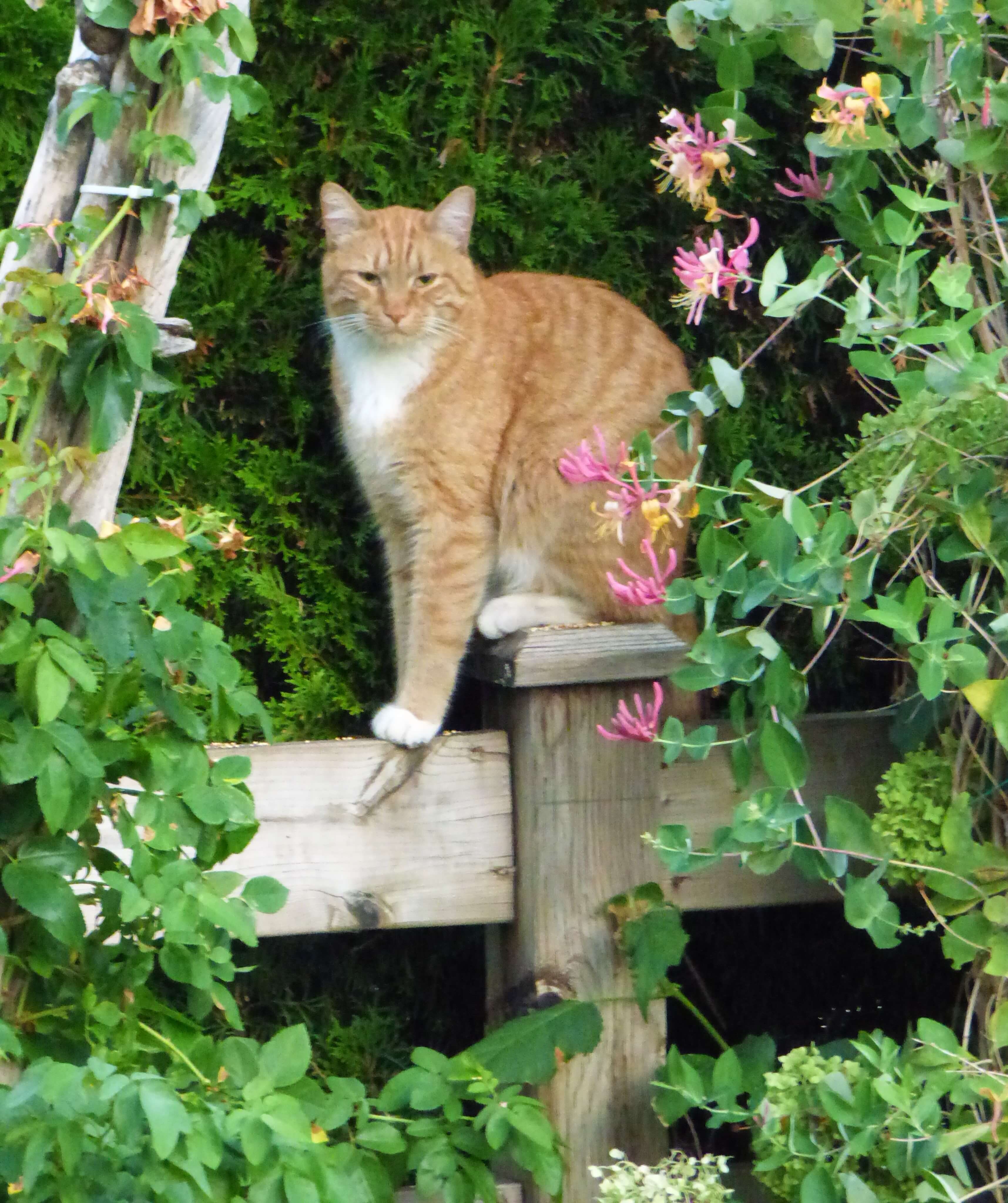
Keeping cats out of your garden is next to impossible, particularly if you own one yourself. While we keep ours leashed when he goes outside (due to coyotes) that doesn’t stop other neighborhood cats from stopping by and tormenting ours by sitting on the fence, just out of reach. Cats are also attracted to the dry, sandy soil commonly found under the eaves of the house, which they use as a litterbox. Your best approach here is to mitigate these areas by covering them with a good quality landscape fabric and river rock. Other cat deterrents include lemon-scented plants such as thyme, lemon balm, or even Citronella geranium.
Rabbits

Wild rabbits are very common on properties with a forest interface, but the worst scenario I have ever come across was a rooftop garden in Burnaby where someone had released domestic rabbits. A few years down the line, that rooftop had dozens of bunnies who along with keeping the lawn well-mowed also killed every tree planted up there by eating the bark all the way around the base, essentially girdling them. You can prevent this by encasing the tree stem to a height of 18” (as high as they can reach) with a cylinder of metal hardware cloth with openings no larger than ¼”. For vegetable garden raids I suggest a blood-based (usually bovine) repellent, as they are deathly afraid of the smell and will avoid the area altogether.
Snakes
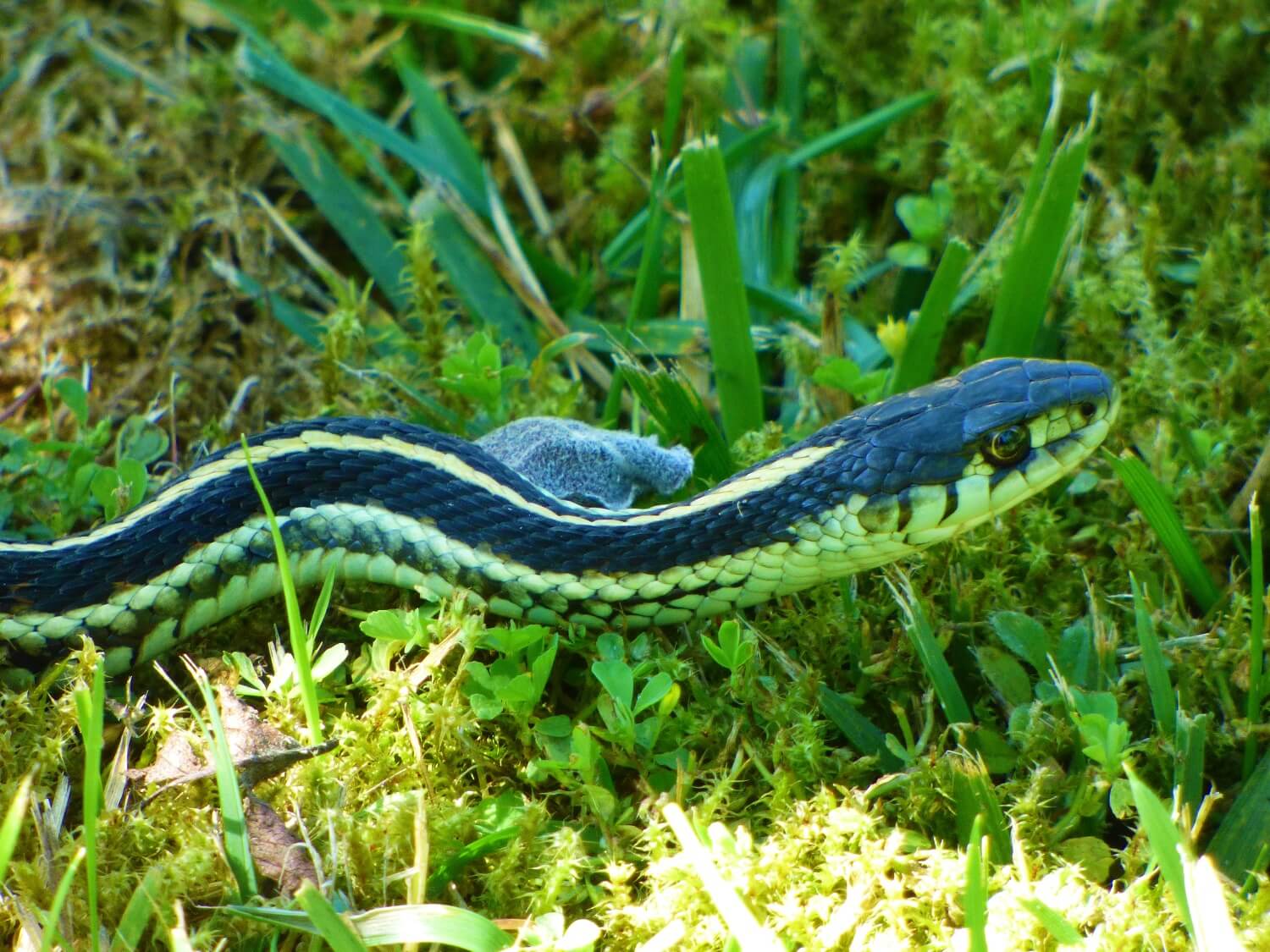
My Dad -- who was a big man! -- was terrified by snakes and I always found it kind of ironic to see this former football player suddenly running away from the lawn mower because he had stumbled upon one. We commonly find garter snakes sunning themselves on the lawn or a pathway, and when we do, they usually just slither away as they tend to avoid interactions with people and pets. That said, we need to understand that these snakes are beneficial, as they prey upon many garden pests such as ants, grasshoppers, and even mice.
Raccoons
If there is such a thing as the evil genius of the animal world, then it is definitely the raccoon. Case in point: I have a dwarf Nectarine tree in my backyard and one day when I examined the nearly ripened fruit, I saw a set of teeth marks. The raccoons had been taste-testing them to see if they were ready yet, and when they finally ripened, they came in the night and gorged themselves on every last one of them. Urban raccoons also like to moisten their food, so any water source such as a pond is also likely to attract them. While a large barking dog can keep them at bay, a smaller pet is likely to be badly injured if it engages the raccoons. Some ultrasonic devices will keep them away, but if you have any teenagers or young adults in your household, their sensitive hearing may also be disturbed by it. Remember that mother raccoons teach their cubs where to forage, so try to deter them at first sight using pepper-based repellents such as Critter Ridder. They are also attracted by the smell of bone meal, so if you are getting your newly planted tulips and daffodils dug up in the night, forego the bonemeal or be very careful to sprinkle it only on the bottom of the planting hole.
Birds
I am going to focus on the two most destructive birds here, the common crow and the Steller’s Jay. Most of the crow damage is foraging for nesting material, pulling out tufts of sedum and such, and they will nest wherever they want to, as illustrated by one of the P’s in the Shoppers Drug Mart sign at our local mall. Steller’s Jays are much more territorial and aggressive. On my first estate gardener job, they would drop hazelnuts on the tractor if we even drove within ten feet of the copse when the nuts were ripening. I have even witnessed one particular Jay pull out newly emerging crocus shoots one after the other -- just for the fun of it! -- and they were left laying on the ground afterward. Some people have had success with owl decoys or wind chimes as deterrents, while others just give in and provide a dedicated feeder with peanuts and sunflowers seeds.
If, by any chance, these birds are tearing up your lawn to eat European Chafer grubs, remember that they are doing you a favour. I once kept an eye on a New Westminster lawn where they laid out chicken wire to deter the birds and a year later it was that lawn that was devasted because the chafer grubs had eaten all of the grass roots while the adjacent unprotected lawns suffered some damage but eventually recovered.
Deer
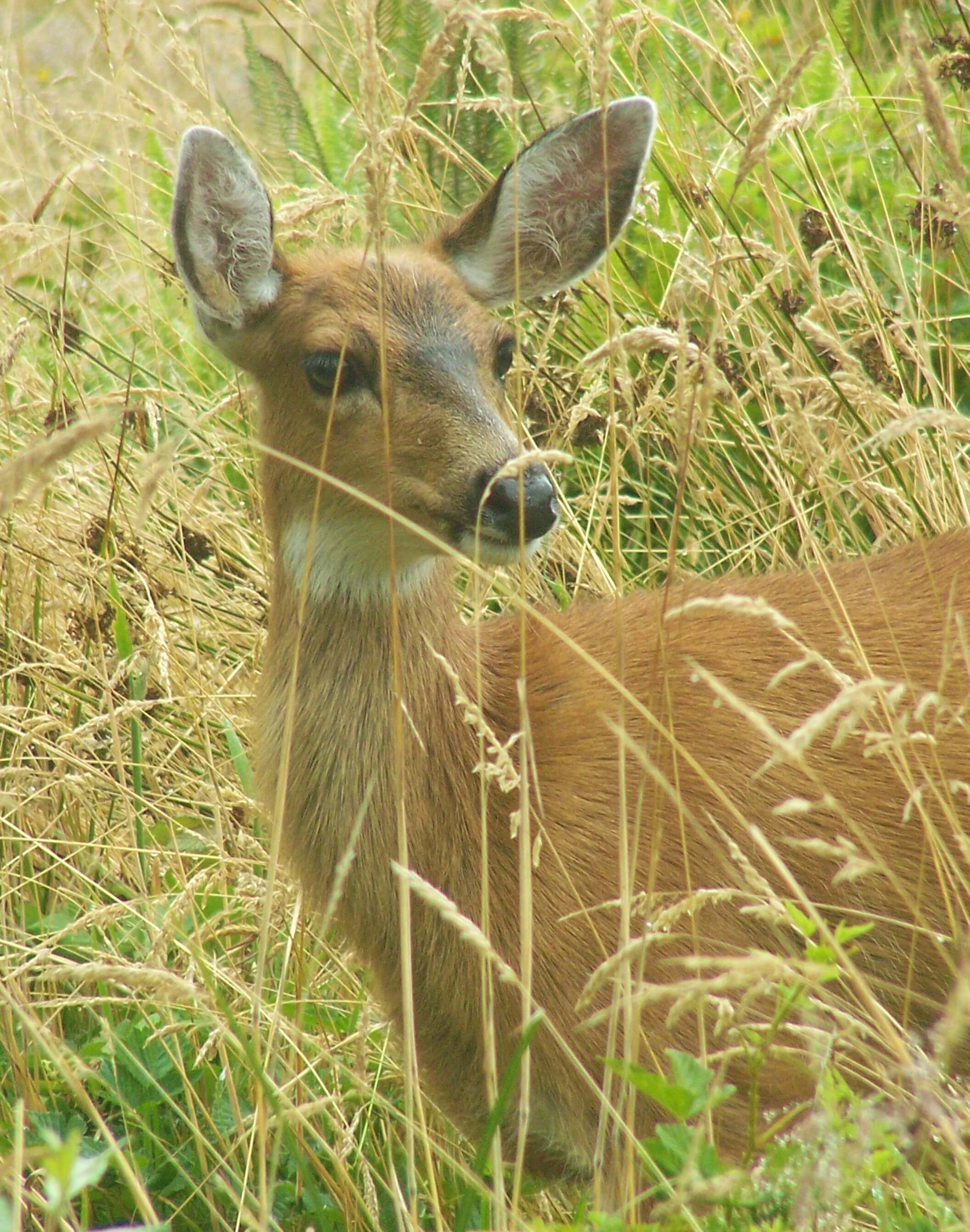
As beautiful as they are, deer are probably our most destructive local wildlife and they are also very persistent. I remember one backyard on a 2-acre residence in the British Properties where the homeowner paid us thousands of dollars to erect a low-voltage electrified fence to keep the deer from chomping on her English laurels and hosta. It took us several tries, as they simply jumped over our first attempt and an additional grounding wire was required. When it was completed, they were unable to get through the back, but about a week later I watched as they waited for the front gate to open and they simply walked up the driveway to the smorgasbord which was waiting for them. Your best bet here is to utilize deer-proof plants, although young deer will graze almost anything until they gain a palate, and tastes seem to vary with deer populations. Good choices would be highly scented plants such as lavender, some hardy geraniums, and Russian sage, as well as any silver-leaved perennials. Other options include blood or Bitrex-based repellents, although this is not a practical large-scale solution.
Dogs

Dog damage such as urine burn on lawns or low shrubs is almost always the result of a negligent owner. Dogs are required to be leashed in public places in both Pitt Meadows and Maple Ridge, so if you see a meandering dog peeing on your plants, politely inform the owner that this is not acceptable, and if that doesn’t work, call bylaw. If you are dealing with burn spots in your own backyard, then try training your dog to deposit in a specific part of the garden, preferably one with a bark mulch surface. Your other options are to heavily water the marked area or treat it with a solution of one cup of baking soda with one gallon of water to neutralize the high nitrogen found in the urine and help to mask its scent.
Spiders
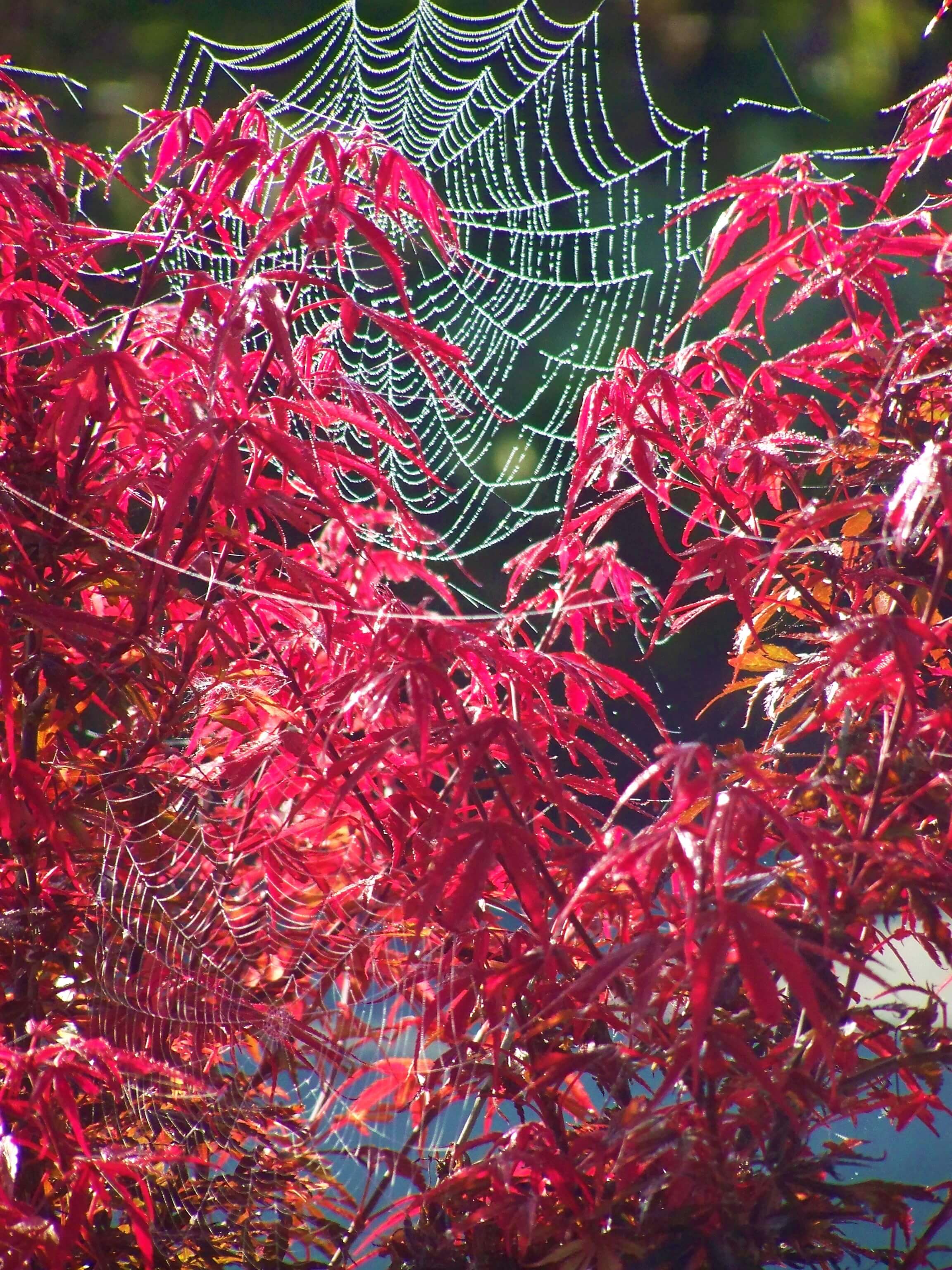
I have included spiders here because we tend to anthropomorphize these into hideous insect monsters, when in fact they are arachnids and more closely related to horseshoe crabs than grasshoppers. Every autumn I get multiple requests from gardeners wanting to know how to rid their landscapes of spiders and the webs they are constantly walking into. My advice is to just get used to it and remember that spiders are essentially beneficial species that trap many destructive insects. The only time I personally intervene is when I see a newly caught bee or butterfly, whom I gently retrieve and release.
Rodents
We will start here with Grey Squirrels, which are an introduced species and very greedy when it comes to potential foodstuffs. I recall one Vancouver job in particular, where we were hired to plant thousands of crocus corms to naturalise, and we could barely get them in the ground before the squirrels dug them up and carried them off. It got so bad that the foreman decided to buy some peanuts and sprinkle them off to the side as a distraction; this worked until they had cached those and then they went after the crocus again. In the end, we had to pin chicken wire over the beds until the bulbs had rooted in. Mice and rats are almost always attracted to food sources such as compost piles, so if you suspect rodent action here then I suggest buying a raised drum composter that keeps the food scraps contained until they have decomposed. All rodents are notorious for chewing on piping or wiring and causing extensive damage; in this case, I recommend a rodent repellent with denatonium benzoate (also known as Bitrex), which is the most bitter chemical compound known and will definitely keep them at bay.
Moles
Most of us have never seen a mole, just the dirt and rock mounds left on our lawns. They make a myriad of tunnels (which undermines both lawns and plants) in search of food, essentially worms and insects, and often revisit these tunnels looking for prey. Flooding tunnels and smoke bombs usually have limited impacts, as moles can plug a tunnel and usually just dig elsewhere. Ultrasonic devices and homemade repellents are just that, repellents, and won’t solve your mole problem. Unfortunately, the solution here is not one for the faint of heart, as it involves scissor traps that quickly dispatch them underground. You will need to follow the instructions carefully as to placement and above-ground indicators will tell you if they have been sprung.
Bears
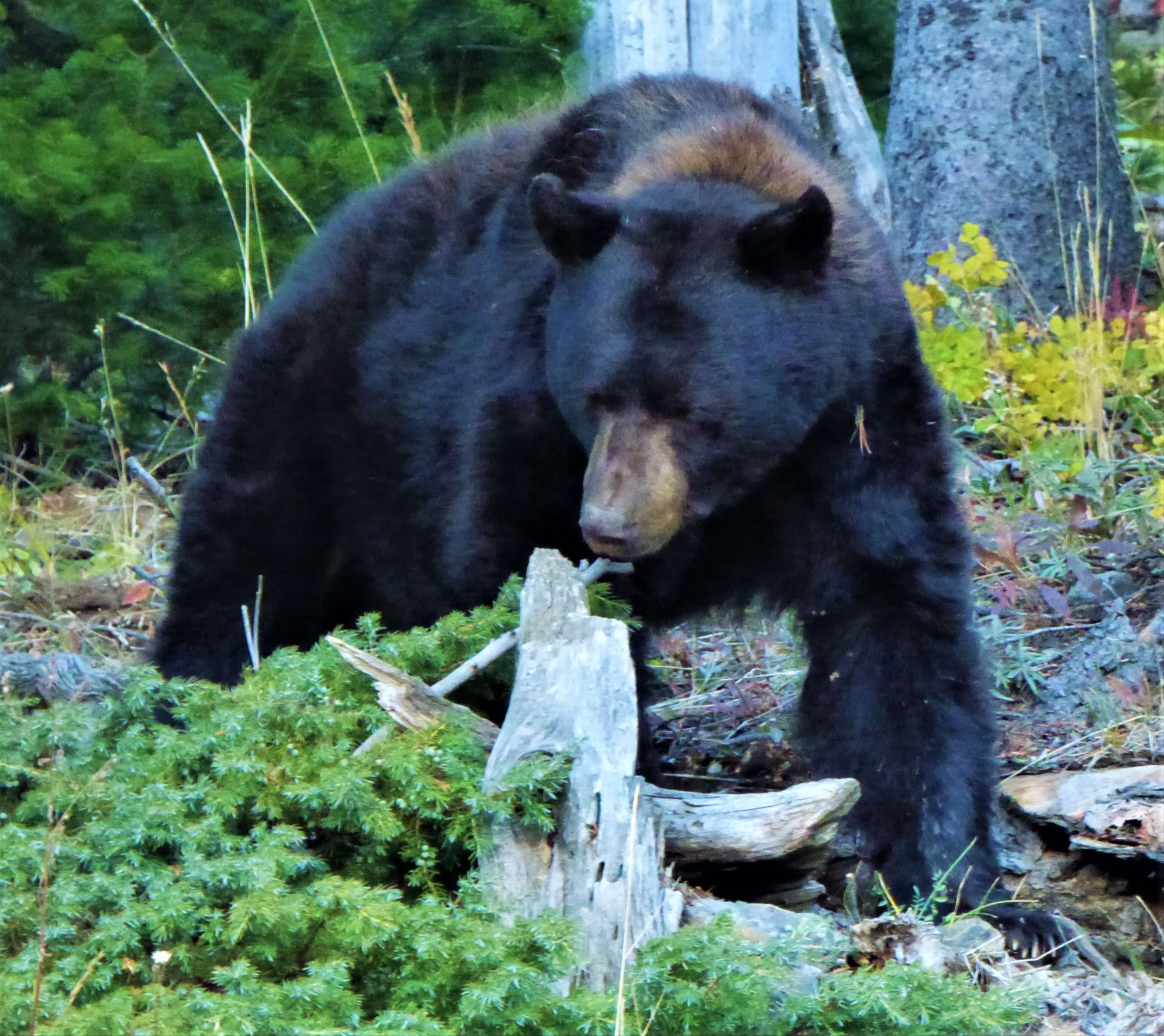
I saved the direst situation for last, as our local black bears are being culled at unprecedented numbers, mostly because we are too lazy to secure our garbage and only put it out just before pick-up. As rural and suburban housing is pushing further and further out into their habitats, interactions between people and bears are inevitable. By way of example, I cycle a forest path every morning and one day on my way home a young black bear came barrelling down the path, only to dive into the forest the second he saw me. Once I arrived at the nearby street, I noticed a family in a minivan who had been chasing the bear down the road to get some video…I could only shake my head and continue home. Needless to say, we should not be interacting with bears and if you live in bear country you may have to forgo growing fruits and vegetables unless you want to install the electrified fencing that many beekeepers use.
So, how you deal with wildlife interactions often says more about you than the animals we deal with. Be ready to compromise a little and remember that they were here first.


